Cattleya is a perennial herb that belongs to the Orchidaceae family and is related to the genus Laelia. The genus Cattleya unites about 40 species, among which there are both lithophytes (plants that grow on stones) and epiphytes (growing on other plants).
This plant is one of the most spectacular orchids. It appeared on the territory of Europe in the nineteenth century and almost immediately fell in love with a huge number of flower growers. Cattleya was named after William Cattley, who was a plant importer and gardener who was able to grow this orchid in his own greenhouse. This plant differs from other orchids in that it has a lip of a very unusual shape, while it and the flower itself are painted in contrasting colors. A blooming orchid looks just great, it happens that about 10 flowers bloom on an adult bush. They can be painted in a variety of shades: from dark purple (almost black) to snow white. The flowers smell just magical. They can have the smell of lily of the valley or lily, and some species and varieties have an excellent incomparable aroma.
Content
Brief description of cultivation
- Bloom... The Cattleya plant is flowering beautifully.
- Illumination... The flower needs direct sunlight before noon and after 16 hours. In the period from May to August, the orchid is placed on the southern windowsill (shaded from midday), and from August to May - on the southwestern or eastern window.
- Temperature regime... It grows well at a temperature typical for a living room. When preparing a bush for flowering, a difference between night and day temperatures of 5-7 degrees is needed.
- Watering... During the growing season, the orchid is watered as the potted substrate dries. Do not let drops of water fall on the bush. During the dormant period, watering should be more rare, while switching to moistening the surface of the substrate from a spray bottle. As soon as the peduncle appears, watering should be resumed.
- Air humidity... The flower is systematically moistened with a sprayer and occasionally given a warm shower.
- Fertilizer... Cattleya needs to be fed during the growth of the pseudobulb, after which the plant is stopped fertilizing. Fertilizers are reintroduced into the substrate after the appearance of the peduncle.Use a complex mineral fertilizer for orchids.
- Dormant period... As a rule, in autumn or winter time after the bush has faded. During this period, it is not fed, but instead of watering, the surface of the substrate is sprayed. The flower needs bright light, while the daylight hours should be long (it is recommended to install additional artificial lighting).
- Transfer... Most often, the bush is transplanted if the soil mixture in the pot sours and cakes. A flower transplant is extremely poorly tolerated.
- Reproduction... By branches and division of the bush.
- Harmful insects... Aphids, spider mites, scale insects, mealybugs and whiteflies.
- Diseases... Gray mold, bacterial spot, black mold and powdery mildew.
Growing features
If you decide to decorate your home with Cattleya, then you need to consider that it requires good care and special growing conditions. Many growers complain that this orchid does not bloom in them, while among them there are both beginners and those who have been growing flowers for several years. This is due to the fact that flowers appear only on an adult, healthy and strong bush, which has enough strength to bloom. If you wish, you can check whether it is worth waiting for your orchid to bloom in the near future. The bush will bloom in the current season if:
- you bought a whole bush with live roots, which already has flowers;
- a bush or a delenka has at least four bulbs and live roots, while there should be some trace of the fact that the plant already had flowers.
In other cases, Cattleya may or may not bloom in the current season. In order for a flower to develop and grow within normal limits, you need to pay attention to 4 conditions:
- direct rays of the sun are needed;
- it is important to properly feed and water it;
- preparing the bush for flowering, be sure to provide it with a difference between night and day temperatures within 5-7 degrees;
- during the dormant period, the plant needs to provide optimal conditions.
Cattleya orchid care at home
When growing Cattleya, you need to remember that it needs strict adherence to the agrotechnical rules of the culture.
Illumination
The plant needs a lot of bright light, so it is recommended to put it on an east or southwest orientation window. A southern window is also suitable, while in the very heat, the flower must be shaded. You can understand that he has enough light by the color of the foliage: the yellowish color of the leaves indicates excessively intense lighting, and if they are dark green, this means they do not have enough light. In normal light, the foliage should be just green.
Temperature regime
Such an orchid grows normally and develops at normal room temperature. During the preparation of the plant for flowering, ensure that there is a difference between moderate and daytime warm temperatures of 5-7 degrees (at this time of the year, such differences are observed in natural conditions).
Air humidity
Cattleya is undemanding to the level of humidity. However, in the spring-summer period, it is recommended to put her pot on a tray filled with water, into which she will lower her air roots.
Watering
Water the flower as the substrate dries in the pot, while making sure that the liquid does not fall on the surface of the foliage. With the onset of a dormant period, first, watering is gradually reduced, and then instead of it, the surface of the substrate in the container is moistened from a spray bottle. After the peduncle begins to grow, the flower is again regularly watered.
On hot days, the bush itself and the surface of the substrate can be moistened with a spray bottle, for this they use distilled, rain or well-settled water. This procedure will help not only increase the humidity level, but also reduce the temperature. It is also recommended to arrange a warm shower for the flower 1 time in 30 days, and to clean the substrate in the pot, spill it with plain clean water.
When watering a bush in the fall-winter period, be extremely careful. If suddenly water gets on the aboveground part of the bush, then gently wipe this place dry, otherwise dark specks may form on the flower. If the liquid enters the center of growth, this will lead to the development of rot on the roots and the flower will die.


Watch this video on YouTube
Cattleya transplant
Such an orchid reacts extremely negatively to the transplant, but still sometimes it is necessary to carry out this procedure. Even if it is very carefully transferred into a new container, it will still take a very long time to recover.
As a rule, the flower has to be transplanted when the substrate becomes unusable, or rather, it oxidizes and becomes strongly compacted. In this case, after the young shoots have reached a length of 20-30 mm, the bush is transplanted. But before you start transplanting a Cattleya, think about whether you will split it. Any container can be used for planting, but most often flower growers choose translucent plastic pots that do not absorb light. However, the orchid grows best in a clay pot that is not covered with glaze. The composition of a suitable substrate should include fine and medium fractions of bark and sphagnum. Before transplanting, the bark is poured with water for 2 days. Then the liquid is drained, and the bark is washed with running water.
At the bottom of the planting container, make a 20 mm thick drainage layer, which should consist of expanded clay or pebbles. It is covered with pieces of polystyrene and medium-fraction bark, then place a flower in a container and sprinkle its roots with a smaller bark. If the room where the flower will stand does not have very high air humidity, then a small amount of perlite must be poured into the substrate, which absorbs moisture and retains it.
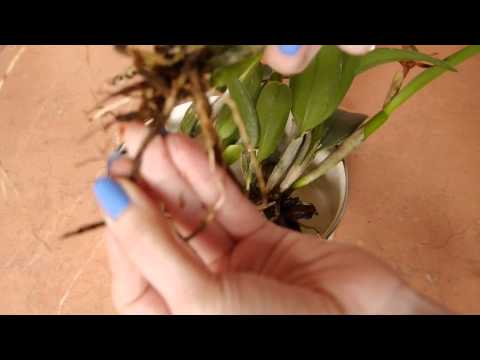

Watch this video on YouTube
Top dressing
It is necessary to feed the flower during the active growth of the pseudobulb. After they stop growing, fertilizing the substrate is stopped. Again, the bush begins to feed when it has a peduncle, and after the beginning of flowering, feeding is stopped again. A suitable fertilizer must contain potassium and phosphorus, using the lowest dosage indicated on the package.
Reproduction methods
Cattleya is propagated by dividing the bush, which is carried out together with transplanting the plant into a fresh substrate (once every 3 or 4 years). It is best to split the flower shortly before the young roots appear.
First of all, remove the bush from the container, while keeping in mind that this is quite difficult to do. In the event that Cattleya grows in a plastic pot, then first remember and squeeze it from the sides, and then try to remove the plant. And if the pot is made of clay, then very carefully insert a knife between the substrate and the pot and move the bush with it to pull the roots out of the container.
Dip the orchid roots into a basin and fill it with water. After about 30 minutes. the substrate should be soaked, then try to gently stir and disassemble the roots, keep in mind that as a result of your actions, they should not be injured. It is recommended to disassemble the roots directly in water, while as it gets dirty, it must be replaced with a clean one. After the roots are almost completely cleared of the substrate, they need to be examined and all injured, dead, dry and rotten areas must be cut out. In the event that young sprouts already have rotten roots, this indicates that the watering is too abundant. Sprinkle the places of the cuts with cinnamon or coal powder; you cannot use antiseptics containing alcohol for this. After such treatment, the root system must be very well dried in a warm place.
Only when the root system dries out can you begin to divide the bush. Please note that on each division there must be a live kidney and at least three pseudobulbs, as well as live roots.To separate the plant, a very sharp instrument previously disinfected with alcohol or fire is used. If it is dirty, it can cause the bush to become infected with a bacterial or viral disease. Sprinkle all places of cuts with cinnamon or charcoal powder. Plant the delenki in separate pots in the same way as the bush itself when transplanting (see above).


Watch this video on YouTube
Cattleya varieties with photos and names
Cattleya is a very spectacular plant that can decorate any room. At the same time, both varieties and species that were born thanks to breeders and natural ones are very beautiful. Today there are more than 1 thousand different varieties of Cattleya, below will be described those of them that are most popular with flower growers:
Cattleya bicolor (Cattleya bicolor)
Plant height varies from 0.3 to 0.6 m, while flowers reach about 10 centimeters in diameter. The flowers are colored reddish-brown, the lip is purple with the edge of a lighter shade. Flowering is observed in autumn and winter.
Cattleya bowringiana
The bush has a height of about 0.7 m, and the flower reaches 70 mm in diameter. It is tinged with a purplish pink hue with a yellow speck on the purple lip. It blooms in autumn and winter.
Cattleya Trianaei
The height of the bush is about 0.5 m, and the diameter of the flower is about 20 centimeters. Flowers are painted in a pinkish-white shade, while a rich crimson lip has a white border. Flowering begins in winter or spring.
Cattleya forbesii
This miniature plant reaches a height of only 10 to 20 centimeters. Olive flowers have a diameter of about 10 centimeters, the lip is white with a pinkish bloom. Blooms in summer and autumn.


Watch this video on YouTube

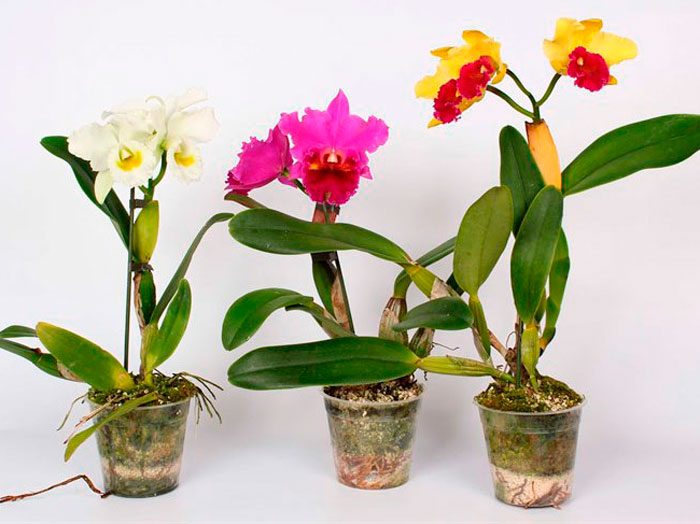
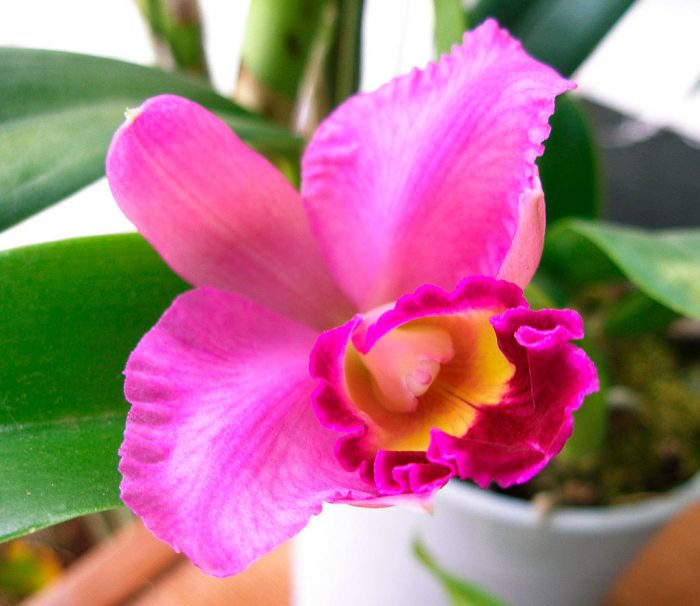
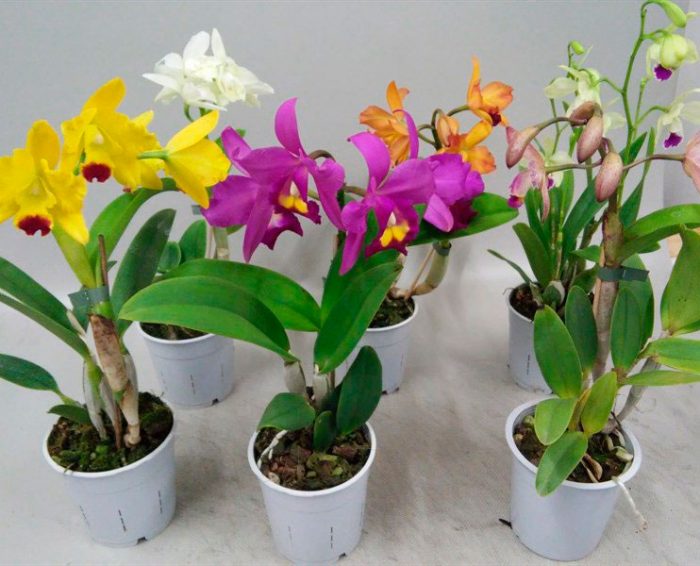
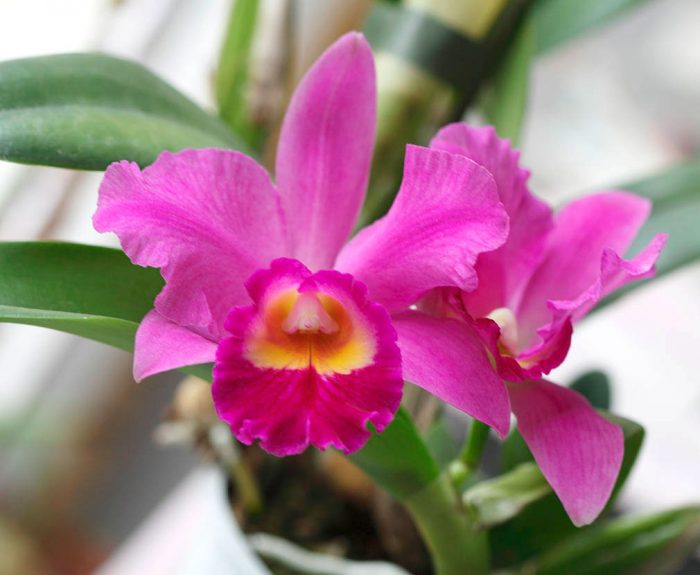
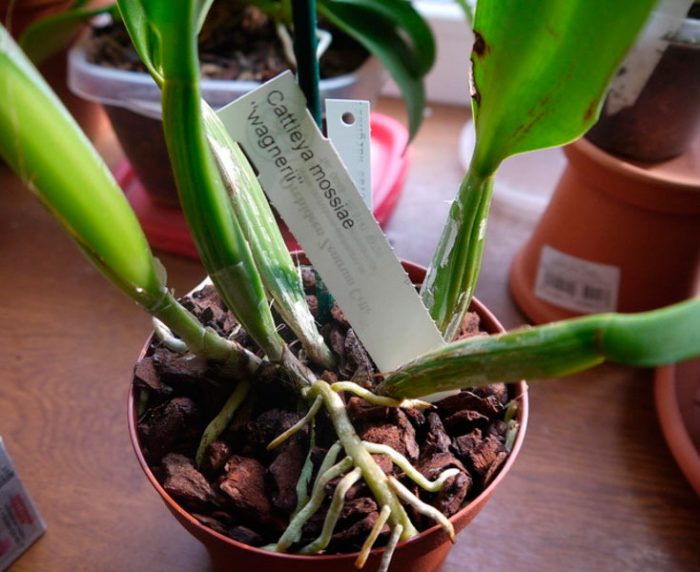
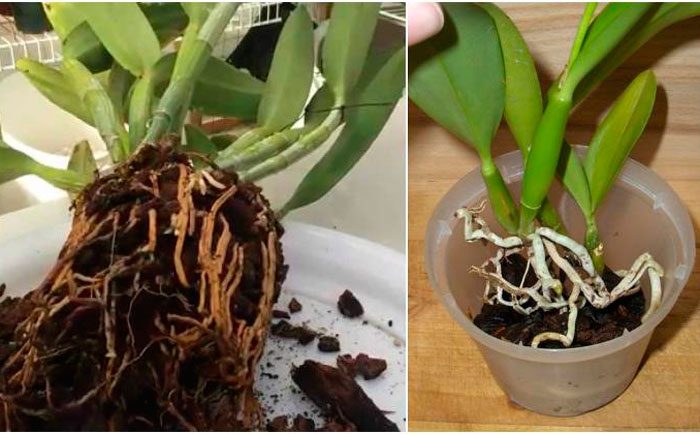
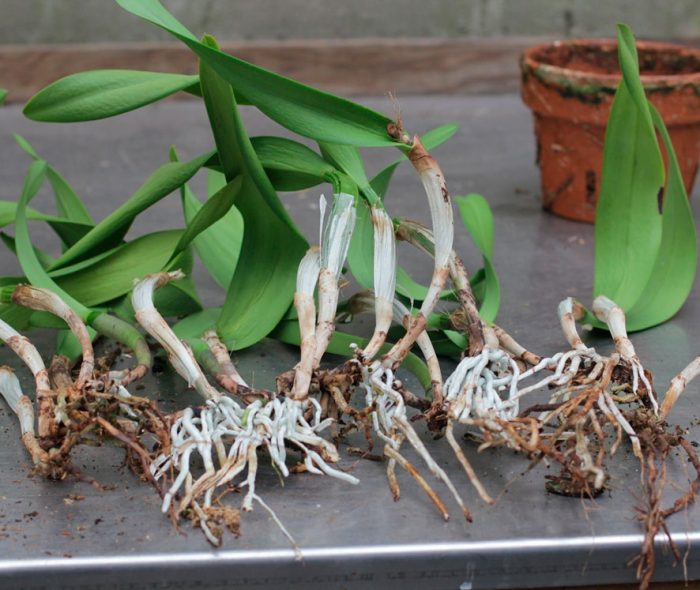

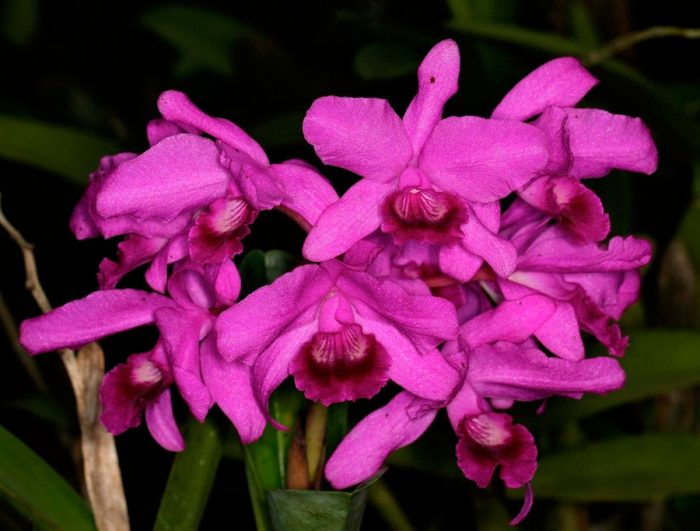
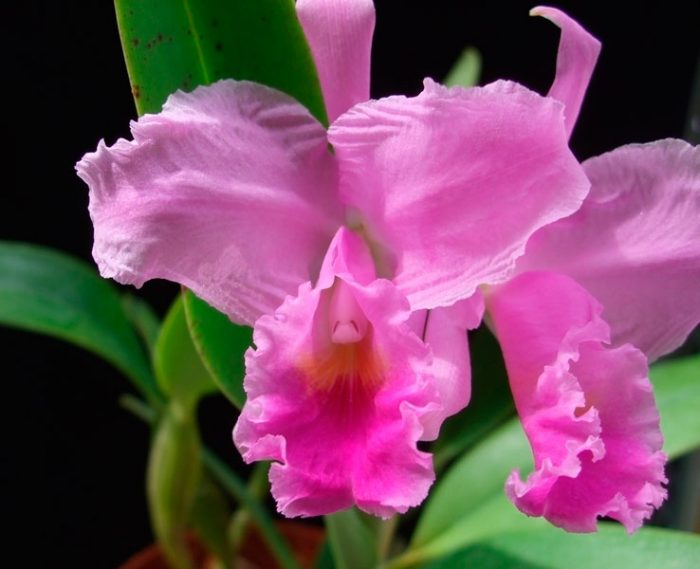
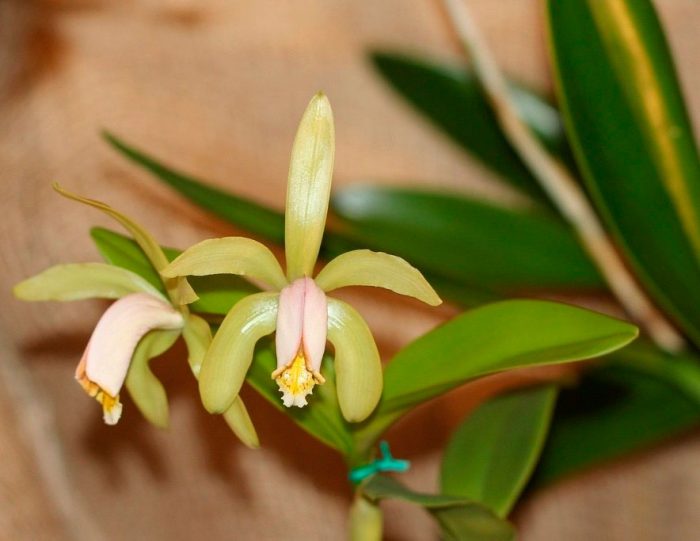










Can Cattleya be watered with garlic infusion or not?